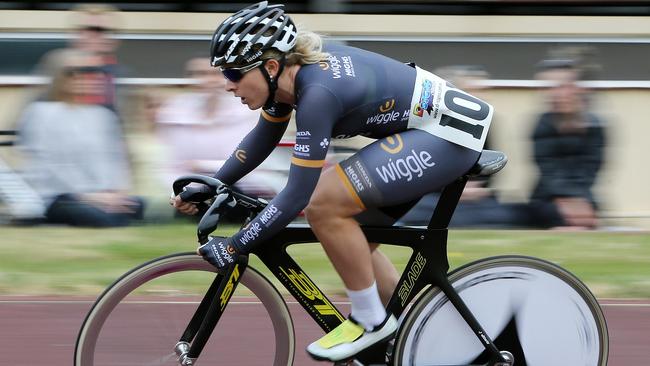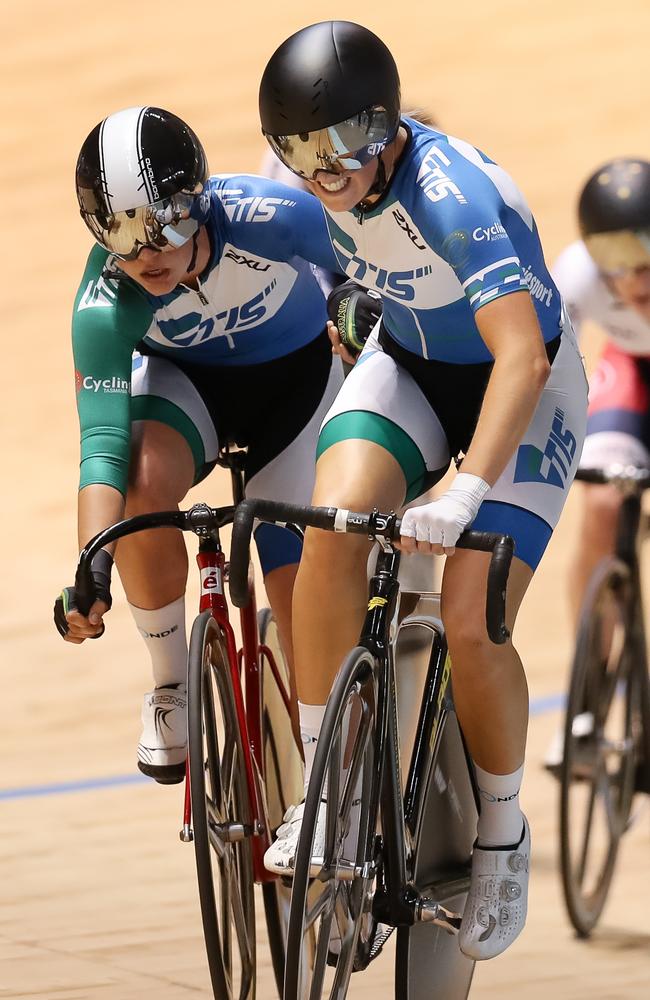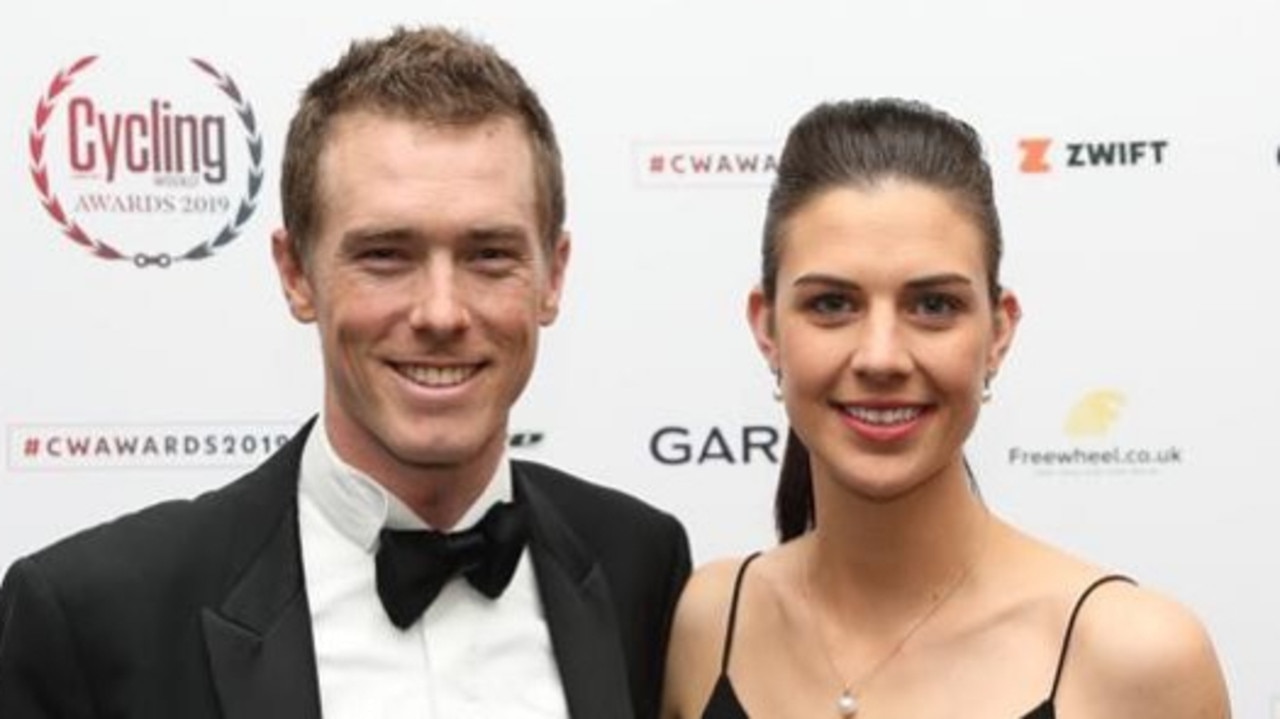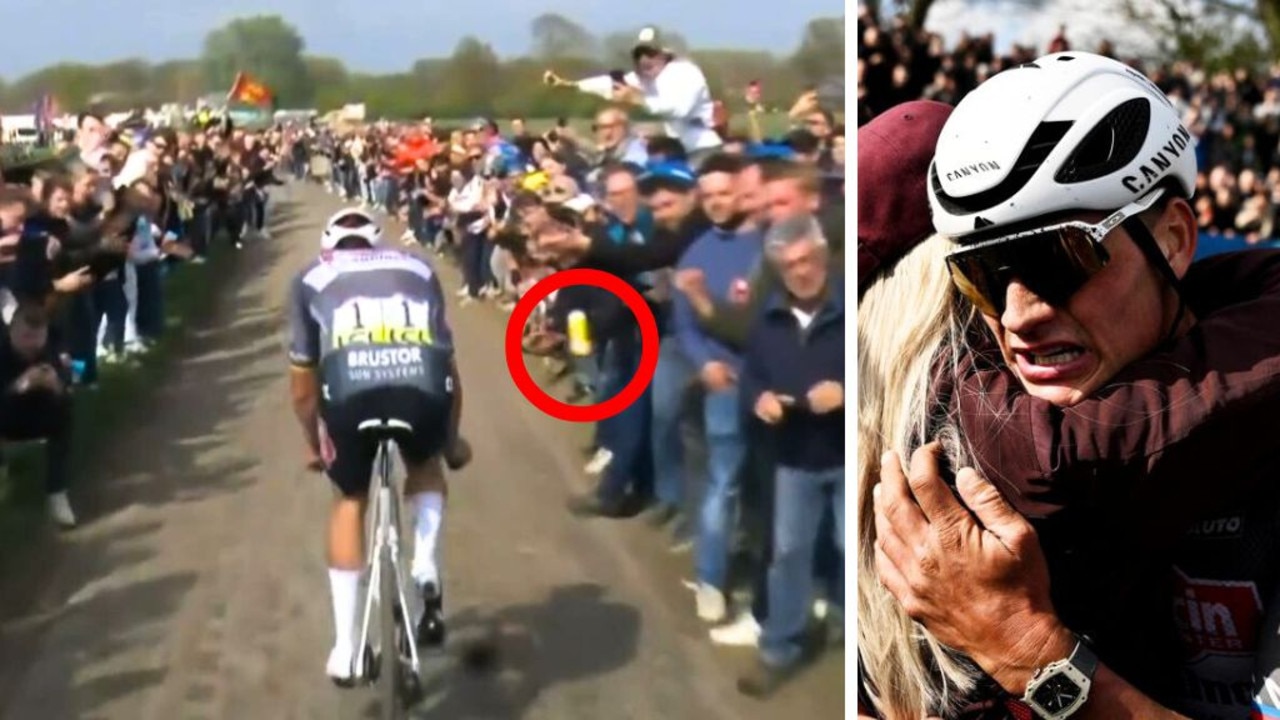Annette Edmondson column: Why the rewards of race cycling outweigh the injury risks
ELITE cyclists are always living on the edge, writes Annette Edmondson as she dusts herself off from a tumble at the National Madison championships.

Cycling
Don't miss out on the headlines from Cycling. Followed categories will be added to My News.
CYCLING should almost be considered an extreme sport.
Reaching speeds above 100km/h, the risk of crashing is always high. Whether we’re out on the roads, mixing with traffic, or racing on the velodrome, falling off is never a good feeling.
Imagine jumping out of a car at 60km/h. That’s what it felt like on Saturday night at Melbourne’s Hisense Arena. I was about to ‘sling’ my teammate Alex Manly into the National Madison after 10 laps of a 120-lap race. Our hands slipped and the force of our bikes slammed us into the ground.
Despite our experience, one little mistake saw us pay the price. We lost skin, bruised joints and I unknowingly cracked my helmet. Nevertheless, I was up on my bike and we resumed the race, finishing second behind Macey Stewart and Kristina Clonan.

Complete with bandages, I clambered onto the podium to receive my medal. This happens in cycling all the time. No big deal, right?
It wasn’t until I visited the team at Thrive Healthcare in Norwood that I realised that this isn’t normal. It’s not normal to ‘feel like you’ve been hit by a truck’ in the morning. It’s not ‘normal’ to have to use your arms to move your head while lying down because the whiplash is so bad. Craig Short explained it would take an event similar to a car accident for the everyday ‘Adelaidean’ to experience trauma like this.
But this is just part of the sport. Cycling is prone to crashes, whether it be hitting other riders, hitting obstacles, slipping out around corners, equipment failures, let alone dealing with riding among traffic.
From a young age, like equine enthusiasts, we’re taught to accept it, to hop up, move our body parts one by one and if everything is intact, hop back on.
Luckily for me, most of my crashes have just involved bruising, stitches and a loss of skin, whereas some others haven’t been so lucky. I’ve witnessed friends become unconscious after racing crashes, and others be helicoptered to hospital.

At just age 15, I was first on the scene when another cyclist was hit by a car, just metres in front of me. I’ve helped move people off the road with broken bones while training and have visited best friends in hospital recovering with lifelong injuries.
Why do we do it? Is it really worth the risk?
Cycling is addictive. Every time you swing your leg over the bike and head out into the fresh air you experience this sense of freedom. A sense of control. You can go wherever you want, as far as you want, and as hard as you want. You can ride in groups, or simply head out on your own. It’s low impact, suits all ages and is great for recovery.
Racers take it another step further. Striving to be great, constantly driven by bettering your best. The sense of achievement is addictive and is an underlying force of motivation in most elite athletes — and people in general.
If people were truly afraid of sharks, they wouldn’t step in the water. If people were afraid to crash a car, they wouldn’t get behind the wheel. The risk of crashing on a bike is always there, but without risk, there will be no reward.
Originally published as Annette Edmondson column: Why the rewards of race cycling outweigh the injury risks


